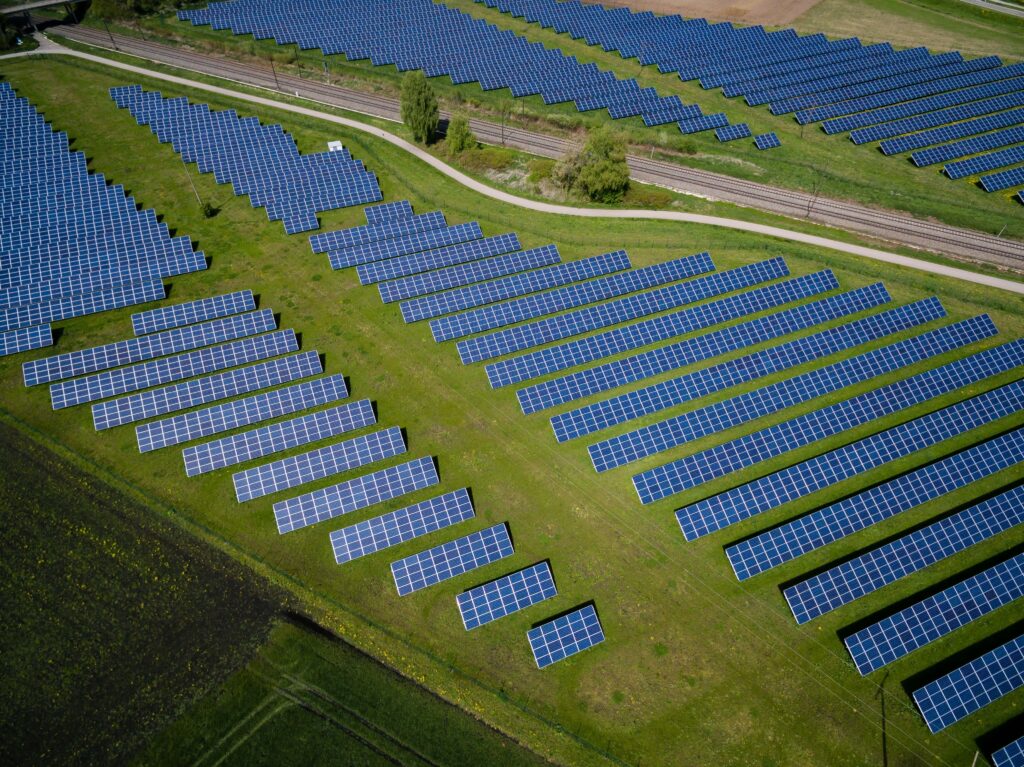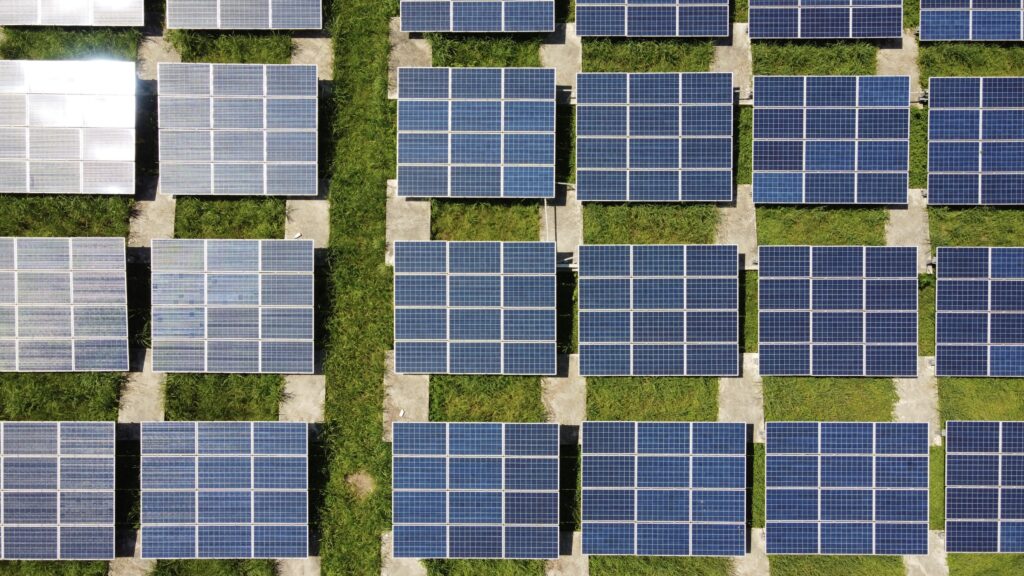So you’re considering going solar and wondering just how many batteries you’ll need to power your house? Well, you’ve come to the right place! In this article, we’ll explore the factors that determine the number of solar batteries required to meet your home’s energy needs. From the size of your house to your electricity consumption habits, we’ll tackle all the essential considerations, shedding light on this electrifying topic. By the end, you’ll have a clearer understanding of what it takes to power your house with solar batteries. Get ready to make an informed decision and embark on an eco-friendly energy journey!

Understanding Solar Energy
Solar energy is a renewable source of energy that is obtained from the sun’s radiation. It has a long and fascinating history that dates back thousands of years. Ancient civilizations, such as the Greeks and Romans, were aware of the power of the sun and used it for heating baths and homes. However, it wasn’t until the 19th century that solar energy was harnessed for practical purposes.
Brief history of Solar Energy
One of the pioneering developments in solar energy was the invention of the photovoltaic effect by French physicist Alexandre-Edmond Becquerel in 1839. This discovery paved the way for the development of solar panels as we know them today. In the late 19th century, American inventor Charles Fritts created the first solar cells using selenium, marking a significant milestone in solar energy technology.
How Solar Energy is harnessed
Solar energy is harnessed through the use of solar panels, also known as photovoltaic panels. These panels are made up of several solar cells that convert sunlight into electricity. When sunlight hits the surface of a solar cell, it knocks electrons loose from their atoms, generating an electric current. This current is then captured and converted into usable electricity.
The evolution and efficiency of Solar Panels
Over the years, solar panels have undergone significant evolution and have become more efficient. Early solar panels had low conversion rates, but advancements in technology have led to the development of panels with higher efficiency. Modern solar panels can convert up to 20% of the sunlight they receive into electricity. This increase in efficiency has made solar energy a viable alternative to traditional sources of power.
What are Solar Batteries?
Solar batteries play a crucial role in storing the energy generated by solar panels for later use. Unlike traditional power sources that rely on constant supply and demand, solar energy is intermittent, and the output depends on the availability of sunlight. Solar batteries, also known as solar storage systems, store excess energy produced during daylight hours and make it available when there is little or no sunlight.
Definition and function of Solar Batteries
Solar batteries are rechargeable batteries that store the excess energy generated by solar panels. They function by converting the excess energy from the solar panels into chemical energy, which can be stored and later converted back to electrical energy when needed. This enables homeowners to have a continuous power supply, even during periods of low sunlight or at night.
Major types of Solar Batteries
There are several types of solar batteries available in the market, with each having its own advantages and drawbacks. The most common types of solar batteries include lead-acid batteries, lithium-ion batteries, and saltwater batteries.
Lead-acid batteries have been widely used in the past but are losing popularity due to their low energy density, short lifespan, and maintenance requirements. Lithium-ion batteries, on the other hand, offer higher energy density, longer lifespans, and require minimal maintenance. Saltwater batteries are a newer technology and are known for their safety and environmental friendliness.
How Solar Batteries store energy
Solar batteries store energy through a chemical reaction that occurs within them. When excess energy is generated by the solar panels, it is directed to the battery, where it charges the battery by creating a chemical potential difference. This potential difference is created by moving ions within the battery, which allows the battery to store the energy in a chemical form until it is needed.
The Role of Solar Batteries in a Solar Power System
Solar batteries are an essential component of a solar power system as they store the energy generated by solar panels. They act as a buffer between the solar panels and the home’s electrical system, allowing homeowners to use the stored energy during times when the solar panels are not producing enough electricity. This ensures a reliable and continuous power supply, even during periods of low sunlight or at night.
The connection between Solar Panels and Solar Batteries
Solar panels and solar batteries work in tandem to provide a complete solar power system. The solar panels convert sunlight into electricity, which is then used to power the home’s electrical appliances. Any excess electricity generated by the solar panels is directed to the solar batteries for storage, ensuring that it is not wasted.
How Solar Batteries complement Solar Panels
Solar batteries complement solar panels by storing the excess energy generated during daylight hours. Without solar batteries, any surplus energy that is not immediately used by the home would be lost. By storing this excess energy, solar batteries ensure that it is available for use during periods of low sunlight or at night.

The impact of Solar Batteries on the efficiency of a Solar Power System
Solar batteries have a significant impact on the efficiency of a solar power system. Without a battery, a solar power system would be limited to supplying power only when the solar panels are actively generating electricity. With a battery, the system becomes much more efficient as it allows homeowners to make use of the excess energy produced during daylight hours, thereby maximizing the system’s overall efficiency.
Examining the Power Requirements of a House
To determine the number of solar batteries needed to power a house, it is important to first understand the power requirements of the house. Different households have different energy needs, and these needs can vary based on various factors such as the size of the house, the number of occupants, and the types of appliances used.
Major Power consuming appliances in a house
Some of the major power-consuming appliances in a house include air conditioners, refrigerators, washing machines, electric stoves, and water heaters. These appliances typically require a significant amount of energy to operate and can have a significant impact on a home’s overall energy consumption.
Average Energy Consumption in homes
The average energy consumption in homes varies depending on various factors such as location, climate, and lifestyle. According to the U.S. Energy Information Administration, the average annual energy consumption for residential buildings in the United States is approximately 10,766 kilowatt-hours (kWh). However, it is important to note that individual energy consumption can vary greatly depending on personal habits and lifestyle choices.
Factors affecting a home’s Energy Consumption
Several factors can affect a home’s energy consumption. These factors include the climate of the region, the insulation of the house, the energy efficiency of appliances, and the habits and lifestyle choices of the occupants. For example, homes located in colder climates may have higher energy consumption due to the need for heating, while energy-efficient appliances can help reduce overall energy consumption.
Calculating Your Home’s Solar Battery Needs
Calculating the number of solar batteries needed to power a house requires careful consideration of various factors. To get an accurate estimate, it is recommended to follow a step-by-step process and make use of available tools and resources.
Step-by-Step process of calculating Solar Battery Needs
-
Determine your home’s average daily energy consumption. This can be done by referring to your electricity bills or using an energy monitoring device.
-
Take into account the number of sunlight hours in your location. The amount of sunlight available affects the amount of energy your solar panels can generate.
-
Calculate the total energy needed to power your home during periods of low sunlight or at night. This can be done by multiplying your average daily consumption by the number of days of autonomy desired.
-
Determine the capacity and efficiency of the solar batteries you are considering. This information can usually be found on the manufacturer’s specifications.
-
Divide the total energy needed by the capacity of the solar batteries to determine the number of batteries needed. Consider any additional factors such as battery degradation and system inefficiencies.
Useful tools and resources for battery needs calculation
Several online tools and resources are available to assist homeowners in calculating their solar battery needs. These tools take into account various factors such as energy consumption, location, and system efficiency to provide accurate estimates. Some popular tools include the Solar Battery Calculator by SolarReviews and the Battery Storage Calculator by EnergySage.
Making use of energy usage statistics
Energy usage statistics can be a valuable resource in calculating your home’s solar battery needs. By analyzing your historical energy consumption data, you can gain insights into your energy usage patterns and identify areas where energy efficiency improvements can be made. This information can help you determine the size and capacity of the solar battery system that best suits your needs.
Sample Scenarios and Battery Requirement Estimates
The number of solar batteries needed to power a house can vary depending on the specific needs and circumstances of the homeowner. Below are three sample scenarios representing different types of households and their estimated battery requirements.
Small houses with minimal consumption
For small houses with minimal energy consumption, such as single individuals or small families, a small solar battery system may be sufficient. A 4-kilowatt solar panel system with a 10-kilowatt-hour battery capacity would likely meet the energy needs of such households, providing backup power during periods of low sunlight.
Average-sized suburban homes
Average-sized suburban homes with moderate energy consumption would benefit from a larger solar battery system. A 7-kilowatt solar panel system paired with a 15-kilowatt-hour battery capacity would provide enough energy to power the house during periods of low sunlight or at night.
Large estates with High Energy Consumption
For large estates with high energy consumption, a more substantial solar battery system would be required. A system with a 15-kilowatt solar panel capacity and a 30-kilowatt-hour battery capacity would provide ample energy storage to meet the demands of such households.
Cost Implications of Solar Batteries
the cost of solar batteries is an important consideration for homeowners looking to invest in solar energy. The cost of solar batteries can vary depending on factors such as capacity, brand, and technology. However, the long-term financial benefits of using solar batteries often outweigh the initial upfront costs.

Cost Range of Solar Batteries
The cost of solar batteries typically ranges from $5,000 to $15,000 or more, depending on the capacity and brand. Higher-capacity batteries usually come with a higher price tag. It is important to consider the overall cost of the solar battery system, including installation and maintenance, when evaluating the cost implications.
Examining the cost-effectiveness of using Solar Batteries
When evaluating the cost-effectiveness of using solar batteries, it is essential to consider factors such as the cost of grid electricity, the amount of excess energy generated, and any available government incentives or subsidies. In regions with high electricity rates or where grid reliability is a concern, solar batteries can offer significant cost savings and energy independence.
The long-term financial benefits of Solar Energy
While the upfront cost of installing solar panels and batteries may seem significant, the long-term financial benefits of solar energy cannot be overlooked. Solar energy can significantly reduce or eliminate electricity bills, provide a reliable and continuous power supply, and even generate income through net metering or feed-in tariffs. Additionally, solar energy contributes to a more sustainable and environmentally friendly future.
Installation and Maintenance of Solar Batteries
The installation and maintenance of solar batteries require careful attention to ensure optimal performance and longevity. While homeowners can choose to install solar batteries themselves, it is recommended to hire a professional installer to ensure proper installation and compliance with local regulations.
The installation process of Solar Batteries
The installation process of solar batteries typically involves the following steps:
-
Site evaluation: A professional installer will evaluate your property to determine the best location for the solar batteries, taking into consideration factors such as available space, shading, and accessibility.
-
System design: Based on your energy needs and the available space, the installer will design a solar battery system that meets your requirements. This includes determining the capacity and number of batteries needed.
-
Mounting and wiring: The batteries are mounted in a secure location, such as a utility room or garage. Wiring is then installed to connect the batteries to the solar panels and the electrical system of the house.
-
Testing and commissioning: Once the installation is complete, the system is tested to ensure proper functioning and to verify that it is connected to the electrical grid, if desired.
Regular maintenance requirements
Solar batteries typically require minimal maintenance compared to other types of batteries. However, periodic maintenance is still necessary to ensure optimal performance and longevity. Maintenance tasks may include:
- Checking battery connections for tightness and corrosion
- Cleaning battery terminals to prevent build-up
- Monitoring battery performance and conducting regular capacity tests
- Keeping batteries at an appropriate temperature range
- Replacing batteries when their lifespan has been reached
Understanding warranties and lifespan of Solar Batteries
When purchasing solar batteries, it is important to understand the warranties offered by the manufacturers. Most solar batteries come with warranties that guarantee a certain number of charge and discharge cycles or a specific capacity retention percentage over a certain period. The lifespan of solar batteries can vary depending on factors such as usage, maintenance, and environmental conditions but can range from 5 to 15 years or more.
Potential Challenges with Solar Batteries
While solar batteries offer numerous benefits, there can be potential challenges and issues that homeowners may encounter. Being aware of these challenges and having knowledge of troubleshooting tips can help address and overcome these problems.
Common problems and troubleshooting tips
Some common problems that may arise with solar batteries include capacity degradation, poor performance in extreme temperatures, and system malfunctions. To troubleshoot these issues, homeowners can:
- Regularly monitor battery performance and identify any decrease in capacity over time.
- Ensure proper ventilation and cooling to prevent overheating of the batteries.
- Check for loose connections and corrosion and ensure that all connections are secure.
- Consult with a professional installer or contact the manufacturer if significant issues persist.
Weather impact on Solar Battery Performance
Extreme weather conditions, such as heatwaves or extremely cold temperatures, can have an impact on the performance of solar batteries. High temperatures can reduce the efficiency and lifespan of batteries, while excessively cold temperatures can affect their charging and discharging capabilities. It is important to choose batteries that are designed to withstand the specific climate conditions of your location.
Possible advancement & solutions to these challenges
As solar energy technology continues to advance, many of the challenges associated with solar batteries are being addressed. Manufacturers are continually improving battery efficiency, lifespan, and performance in extreme weather conditions. Advancements in battery chemistry, cooling systems, and monitoring technology are helping to overcome these challenges and further enhance the capabilities of solar batteries.
The Future of Solar Batteries
As technology continues to evolve, the future of solar batteries looks promising. Emerging technologies in solar battery storage, such as solid-state batteries and flow batteries, are expected to revolutionize the industry by offering increased energy density, longer lifespans, and improved safety.
Emerging technologies in solar battery storage
Solid-state batteries, for example, are being developed to replace traditional lithium-ion batteries with a more efficient and safer alternative. These batteries use solid electrodes and a solid electrolyte instead of a liquid, which eliminates the risk of leakage or thermal runaway. Flow batteries, on the other hand, offer the ability to store large amounts of energy for longer durations, making them ideal for grid-scale storage.
How advancing technology might affect the number of batteries required
Advancing technology in solar battery storage is expected to increase the energy density of batteries, allowing them to store more energy in a smaller footprint. This increased energy density could potentially reduce the number of batteries required to meet the energy needs of a house. Additionally, improvements in battery lifespan and efficiency could further optimize the utilization of stored energy, reducing waste and improving overall system performance.
Predictions for the affordability and efficiency of solar batteries in the future
As technology continues to advance and economies of scale are achieved, the affordability of solar batteries is expected to improve. The cost of manufacturing will likely decrease, making solar batteries more accessible to homeowners. Simultaneously, the efficiency of solar batteries is expected to increase, allowing for greater energy storage and utilization. These advancements will contribute to the widespread adoption of solar battery systems and a more sustainable future powered by renewable energy.
In conclusion, solar batteries play a vital role in harnessing the potential of solar energy for homes. By storing excess energy generated by solar panels, they provide a reliable and continuous power supply, even during periods of low sunlight or at night. With advancements in technology and improving cost-effectiveness, solar batteries are becoming an increasingly popular choice for homeowners looking to reduce their reliance on traditional grid electricity and embrace a more sustainable and environmentally friendly energy source.




